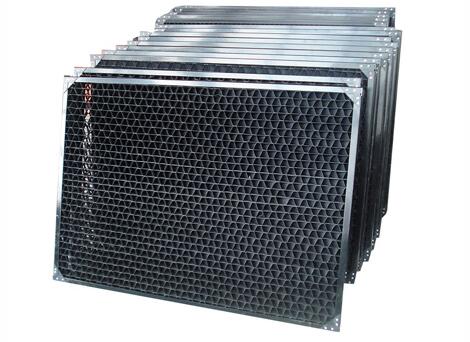Air Inlet Louvers play a crucial role in maintaining the efficiency and performance of cooling tower systems. Over time, these louvers can accumulate dust, debris, and contaminants, affecting the overall effectiveness of the cooling process. In this guide, we'll explore the essential steps to keep your air inlet louvers clean, ensuring optimal cooling tower performance.

The efficiency of a cooling tower system is directly linked to the condition of its components, with air inlet louvers being no exception. These louvers act as the gateway for fresh air, allowing it to pass through and cool the water within the tower. When the louvers are dirty, the airflow is restricted, leading to decreased efficiency, increased energy consumption, and potential issues like overheating. Regular cleaning is essential to maintain the cooling tower's functionality.
Before diving into the cleaning process, it's crucial to conduct a thorough inspection of the air inlet louvers. Look for visible signs of dirt, dust, and debris. Check if any contaminants are lodged between the louvers or if there's an accumulation on the surfaces. Identifying the extent of buildup will guide your cleaning approach.
1. Preparing for Cleaning: Ensuring Safety and Accessibility
Before starting the cleaning process, ensure the cooling tower is turned off to guarantee safety during maintenance. Additionally, make sure you have the necessary safety equipment, such as gloves and protective eyewear. If the louvers are located at a height, use proper access equipment to reach them safely.
2. Dry Cleaning: Removing Loose Debris
Begin by using a soft-bristle brush or compressed air to remove loose debris and dust from the louvers. Work systematically, starting from the top and moving downwards. This initial step helps prevent loose particles from falling into the tower and ensures a cleaner surface for the subsequent cleaning methods.
3. Wet Cleaning: Removing Stubborn Contaminants
For more stubborn contaminants or built-up grime, a wet cleaning approach is necessary. Prepare a mild detergent solution or use a specialized cleaning solution recommended by your cooling tower supplier. Apply the solution to the louvers using a soft sponge or cloth, ensuring even coverage. Allow the solution to sit for a few minutes to loosen the contaminants.
4. High-Pressure Washing: Thorough Cleaning for Efficiency
In some cases, a high-pressure washer may be employed to ensure a more thorough cleaning. Adjust the pressure to a level that effectively removes contaminants without causing damage to the louvers. This method is particularly useful for cleaning hard-to-reach areas or extensive cooling tower systems.
Cleaning air inlet louvers should be part of a routine maintenance schedule for your cooling tower system. The frequency of cleaning will depend on factors such as the environment, air quality, and the cooling tower's usage. Regular inspections will help you determine the ideal cleaning intervals to maintain optimal performance.
In conclusion, keeping your air inlet louvers clean is paramount for preserving the efficiency of your cooling tower system. Regular inspections, dry cleaning, wet cleaning, and high-pressure washing are essential steps in maintaining unobstructed airflow. Establishing a consistent cleaning schedule will ensure the long-term performance of your cooling tower.
For more information on cooling tower maintenance or to explore high-quality air inlet louvers, don't hesitate to contact us. As your trusted cooling tower supplier, we are here to provide expert guidance and solutions to keep your cooling system operating at its best.